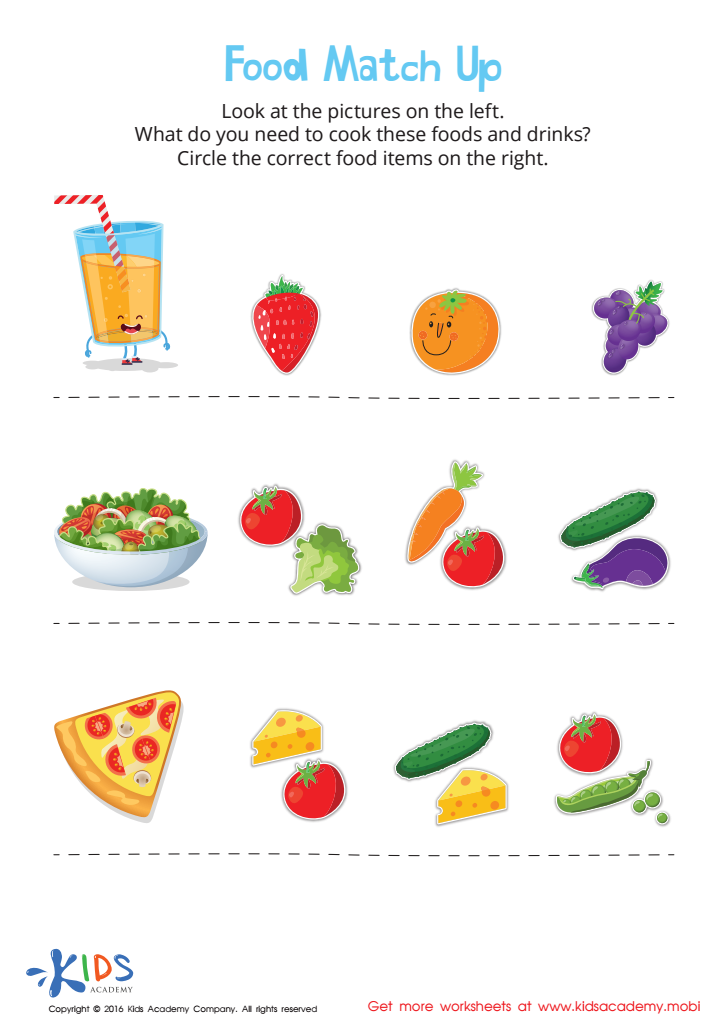-
English
-
English Pre-K
-
Unit 1: Early Literacy Skills
-
ABCs
- Pre-writing Activities
- Letter A
- Letter B
- Letter C
- Letter D
- Letter E
- Letter F
- Letter G
- Letter H
- Letter I
- Letter J
- Letter K
- Letter L
- Letter M
- Letter N
- Letter O
- Letter P
- Letter Q
- Letter R
- Letter S
- Letter T
- Letter U
- Letter V
- Letter W
- Letter X
- Letter Y
- Letter Z
-
Phonological Awareness
- Rhyming Words
- Letter Sounds B, C, D, and F
- Letter Sounds G, H, J, and K
- Letter Sounds L, M, N, and P
- Letter Sounds Q, R, S, and T
- Letter Sounds V, W, X, Y, and Z
- Letter Sounds A, E, and I
- Letter Sounds O and U
- Beginning Sounds
- Matching Letters to Sounds
-
ABCs
-
Unit 2: Vocabulary
-
Common Words
- Sorting Words into Categories
- Color Words
- Verbs and Adjectives
-
Sight Words
- Sight Words 'I' and 'Can'
- Sight Words 'You' and 'Like'
-
Common Words
-
Unit 3: Print Awareness
-
Parts of a Book
- Working with a Book
- Spaces Between Words
- Text and Illustrations
-
Picture Books and Poems
- Picture Book Text Features
- Poem Text Features
- Signs and Labels in the Community
-
Parts of a Book
-
Unit 4: Reading Literature
- Questions About Stories
- Discussing Stories
-
Unit 5: Reading Informational Texts
- Retelling Details in a Text
- Questions About a Text
- Connections Between Events
- Text Features
- Describing Illustrations
-
Unit 1: Early Literacy Skills
-
English Pre-K
-
Math
-
Math for Pre-Kindergarten
-
Logic and Geometry
-
Matching and Sorting
- Same and Different
- Which One Is a Little Different?
- Objects That Go Together
- Sorting by Color and Size
- Sorting The Same Group in Different Ways
- Patterns
-
Shapes
- Shapes in Our Environment
- Naming Shapes Regardless of Size
- Making Shapes in Preschool
- Comparing Shapes
- Relative Positions
- Sorting Shapes
-
Matching and Sorting
-
Early Number Sense
-
Numbers 1–5
- Counting to 3
- Counting to 5
- Arranging Objects up to 3 Objects
- Arranging up to 5 Objects
- Writing Numbers 1–5
-
Numbers 1–5
-
Numbers up to 10
- Counting to 10
- Arranging up to 10 Objects
- Number 0
- Writing Numbers 6–10
- Breaking Down Numbers 6-10
-
Logic and Geometry
-
Math for Pre-Kindergarten
Objects That Go Together
At preschool age your child is like a sponge; they soak up every experience and make connections that last throughout their learning. Playing games such as matching games is a lot of fun and develops a wide variety of early learning skills. Being able to match objects or pictures and be able to explain why those objects are the same requires a wide range of cognitive skills. Through matching children learn to recognize similarities of things in the world around them.
In order to match objects or images, children need to be able to understand the concept of same and different. This skill is important as they will need this to be able master more complex skills such as how to sort and order things. Matching is also a pre-reading skill as children need to be able to distinguish the difference between letters like b and d.
You can foster this understanding by modeling your own thinking. For example, as you put away dishes, think out loud so that your child can hear your thought process as your sort bowls, plates, and cups. Describe the way things feel, how they are shaped, and what they are used for.
Preschool children love to help with tasks, so get them in on the fun! As you are folding laundry, ask them to help you identify what is the same about some of the clothing and what is different. Point out that two shirts might be similar, but are they exactly the same? Encourage your child to use all of their senses when doing this. Ask them questions like: how does it feel, what does it look like, is it heavy or light? As your child gets better at identifying things that are the same and different, you can introduce simple matching games and puzzles.
Higher order matching activities include making connections between things in the world that go together like bread and a sandwich, or rain and an umbrella. Once your child has mastered matching items that are the same, they can begin to look for items that go together based on their connections.
This video offers an engaging learning experience for your child explaining relationships between various objects. With examples such as the way a bicycle needs its wheels your child will be making new connections before you know it!
Most kids love to eat, so this activity is the perfect way to engage them in thinking about connections.
Click on the logic activity below to stretch your child’s thinking skills while encouraging problem solving and reasoning. As your child makes matches between two of the items, ask them to explain why they think those things go together.
Extend your child’s learning by asking them to make connections between objects in your home. Here are a few examples:
- Toothbrush and toothpaste
- Pillow and blanket or bed
- Cup and water or juice
- Foot and sock or shoe
Be sure to encourage your child to explain how the objects are connected and why they think they go together! Continue their learning with even more fun…check out our catalogue to find more resources.
By: Nora Brown
Elementary School Teacher



